Ask Ethan: Where did the Big Bang happen?

If you’re looking for a point in space, the answer is going to shock you.
“The world you see, nature’s greatest and most glorious creation, and the human mind which gazes and wonders at it, and is the most splendid part of it, these are our own everlasting possessions and will remain with us as long as we ourselves remain.” –Seneca
Of all the concepts and topics that get tossed around, the Big Bang is one of the most controversial. Sure, it’s a scientific theory that’s quite old — it’s been around since the 1940s — and the evidence in favor of it has been overwhelming since the 1960s. The idea is simple: that the Universe had a beginning. That it had a birthday. That there was a day without a “yesterday,” where matter, radiation and the expanding, cooling Universe we recognize did not exist before a certain moment in time. And yet, here we are. Which brings up a slew of questions to any curious mind. Mark Trubnikov is one such curious individual, and he wants to know:
[A]re there any theories or experiments that can find out and prove our position in space according to the Big Bang point? I think that, as far, as we have very limited observation opportunities form our planet, that would be not so easy to determine the curvature of the space here… [W]hy do we think that the Big Bang happened in a point in the 3D-space? And why do we think that the Universe is a sphere?
These are all good questions, and they’re all common conceptions that people have of the Universe, for good reason. But are these assertions true?
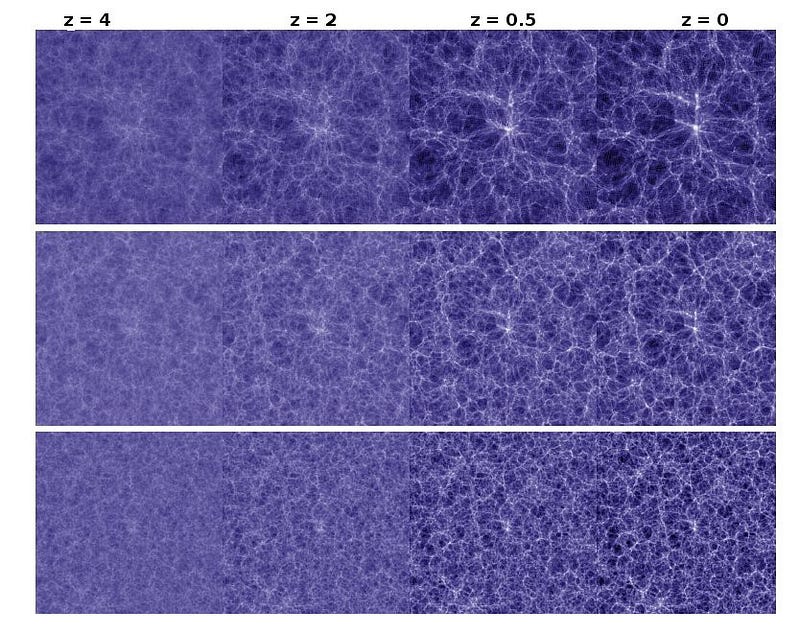
We commonly think of the Big Bang as a literal “bang,” or an explosion. It’s true that the Universe was similar to a tremendous, energetic, expanding fireball in the very earliest stages. It was:
- full of particles and antiparticles of all different types, as well as radiation,
- all of which was expanding away from every other particle, antiparticle and quantum of radiation,
- all of which was cooling down and slowing down as it expanded.
That sure sounds like an explosion. In fact, if you were actually around during those early moments and were somehow shielded from all that energy, it would even make a sound, which the video below, from 0:05 to 0:45, enables you to listen to.
But I’ve carefully been using the word “expansion” rather than explosion when it comes to this phenomenon. An explosion is something that occurs at one location in space and whose debris emanates from that point. A supernova is an explosion; a gamma ray burst is an explosion; a bomb detonating is an explosion; a grenade igniting is an explosion.
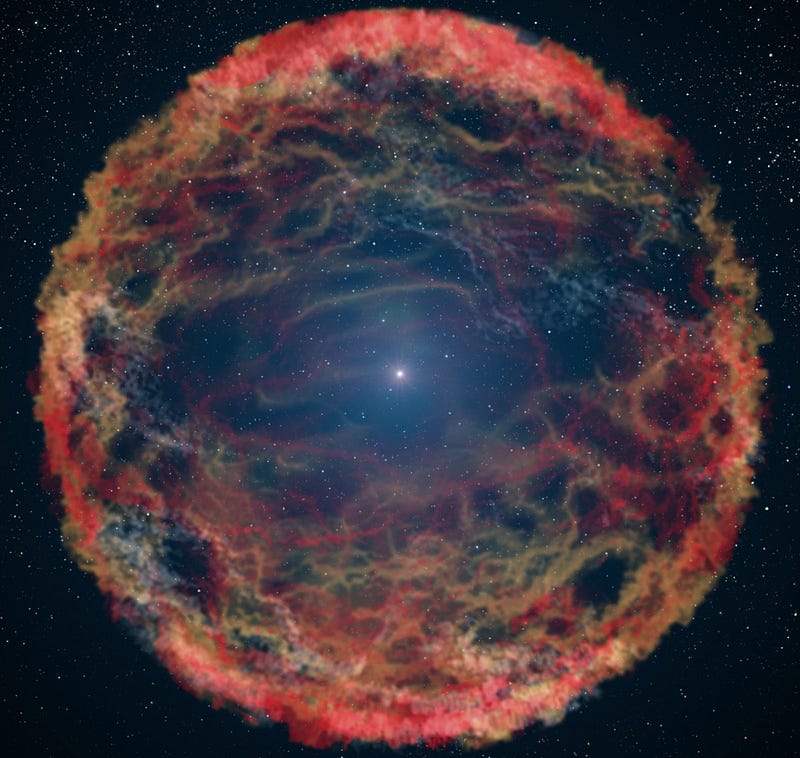
But the Big Bang is not an explosion. When we talk about “the hot Big Bang,” we’re talking about the very first moment that the Universe could be described by this particle, antiparticle and radiation-filled state. Where the Universe begins expanding and cooling from this state according to the laws of General Relativity, and where we head down the path towards antimatter annihilating away, atomic nuclei and then neutral atoms forming, and finally forming stars, galaxies and the large-scale structure we see today. The key to the first question is understanding exactly what the Universe was doing at that moment: at the moment where we can first describe it in this hot Big Bang framework.

As far as we can tell, there was no special point. There was no “origin” to the Universe starting out this way. What all the evidence points to is a counterintuitive but no less true conclusion: that the Big Bang occurred everywhere all at once. The evidence for this is overwhelming, and comes from the Universe itself. The Universe, if we look at the large-scale structure, of how galaxies cluster, of what the leftover glow from the Big Bang looks like, of what the average density is in regions more than a few hundred million light years in size, etc., we find two important observational facts about our Universe: it appears to have the same properties everywhere, and it looks the same in all directions. In physics terms, this means the Universe is homogeneous (the same at all locations) and isotropic (the same in all directions).

You don’t get a Universe with those properties from an explosion, period. The “faster moving stuff” ends up the farthest away, but it also ends up the most diffuse over time; greater distances would appear to have fewer galaxies per unit volume, but they don’t in our Universe. Wherever the explosion occurred would be a clearly identifiable point. Because of how our Universe works, that point would have to be just a few million light years offset from the Milky Way, located just outside of the local group; statistically, with more than 170 billion galaxies in the Universe, the odds are about 100 times worse than winning either the Powerball or the Mega Millions jackpot.
The fact that the Universe is homogeneous and isotropic tells us that the Big Bang happened simultaneously, some 13.8 billion years ago, at all locations equally. But we can’t see it at all locations equally; we can only see it from where we are. Our vantage point is inherently limited. Which is why you often see illustrations like the one below: of our Universe as seen from where we are, and with us at the center.
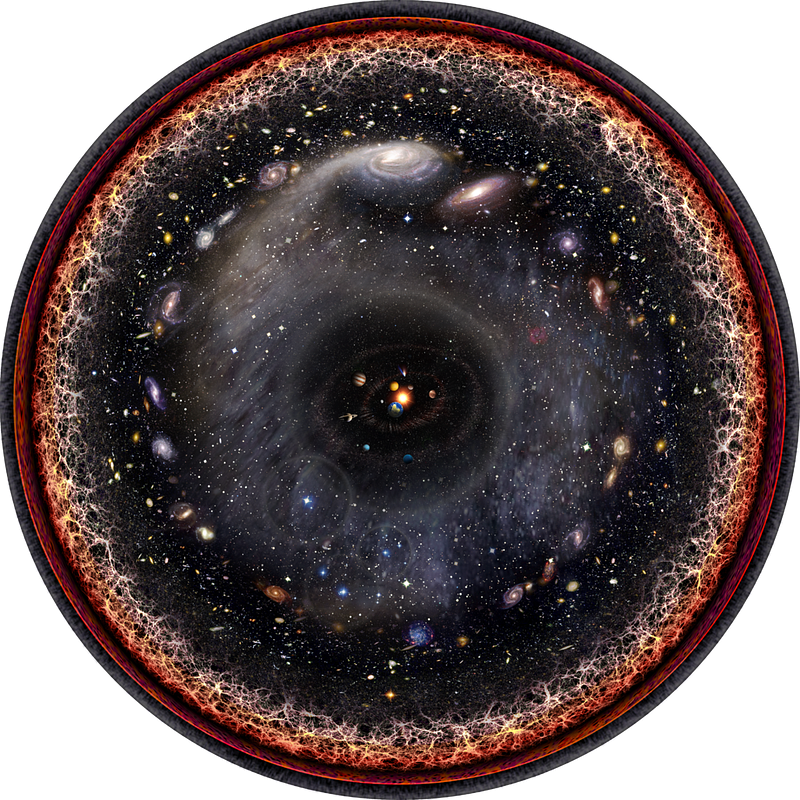
But this does not mean that the Universe is a sphere! In fact, if we want to know the shape of the Universe, it’s something we can actually measure, and place constraints on. If you walk outside and send two of your buddies in different directions so that you can all see each other, the three of you will form a triangle. Each one of you can measure the angle the other two appear to be at, relative to your point of view. If you then know those three angles, you can add them up: you’d expect them to be 180º, because that’s how many degrees are in the three angles of any triangle.
Any triangle, that is, that’s in flat space.

As it turns out, space doesn’t need to be flat! It could be negatively curved, like the surface of a horse’s saddle, where the angles add up to less than 180º. Or it could be positively curved, like the surface of a sphere, where the angles add up to more than 180º. If you stood on the equator in South America, your friend stood on the equator in Africa and another friend stood at the North Pole, you’d discover that the difference was significant: you’d wind up with a number closer to 270º than 180º. Well, we don’t have friends who can tell us what angles they see in space, but we have something just as good: the fluctuations in the Cosmic Microwave Background, which would have very different appearances depending on what the curvature of space actually is.
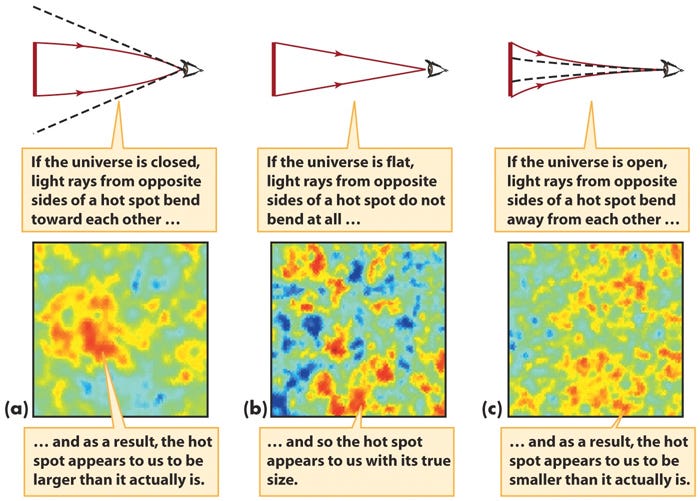
Well, we’ve made those observations, and what we’ve found is overwhelming: the Universe is flat, as far as we can tell. Really, really flat. In fact, the latest joint data from Planck and from the Sloan Digital Sky Survey tell us that if the Universe is curved — either positively or negatively — it’s on a scale that’s at least 400 times larger than the part of our Universe observable to us. And that part, the part we can see, is over 92 billion light years across.
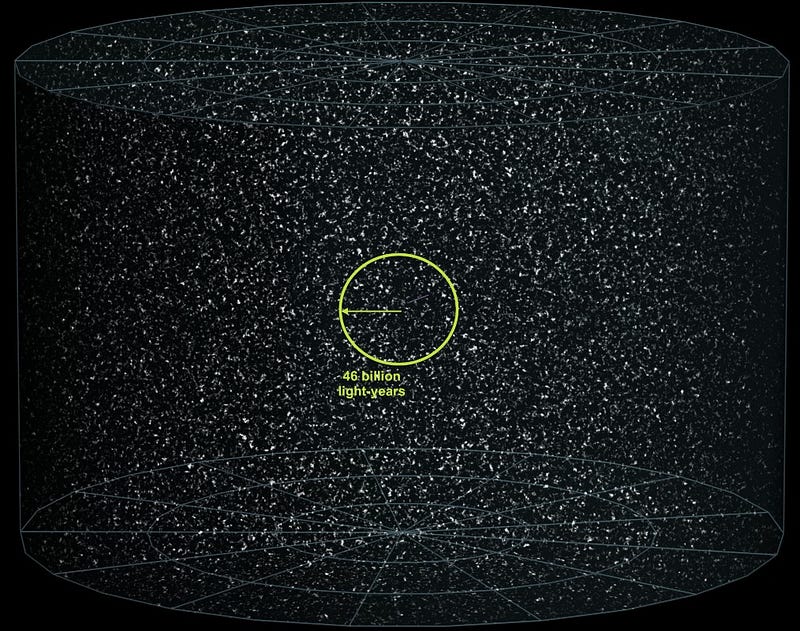
So the Big Bang happened everywhere at once, 13.8 billion years ago, and our Universe is spatially flat to the best we can measure it at present. The Big Bang did not happen at a point, and the way we can tell is through the extraordinarily high degree of isotropy and homogeneity of the Universe. (It’s so good that when we notice an inhomogeneity that’s 0.01% of the Universe’s average, we wonder if something’s wrong!) So if you want to assert that the Big Bang happened exactly where you are, and that you’re right at the center of where it all started, no one can tell you that you’re wrong. It’s just that everyone, everywhere, in the entire Universe is just as right as you are when they make that claim, too.
Submit your Ask Ethan questions to startswithabang at gmail dot com!
This post first appeared at Forbes, and is brought to you ad-free by our Patreon supporters. Comment on our forum, & buy our first book: Beyond The Galaxy!





